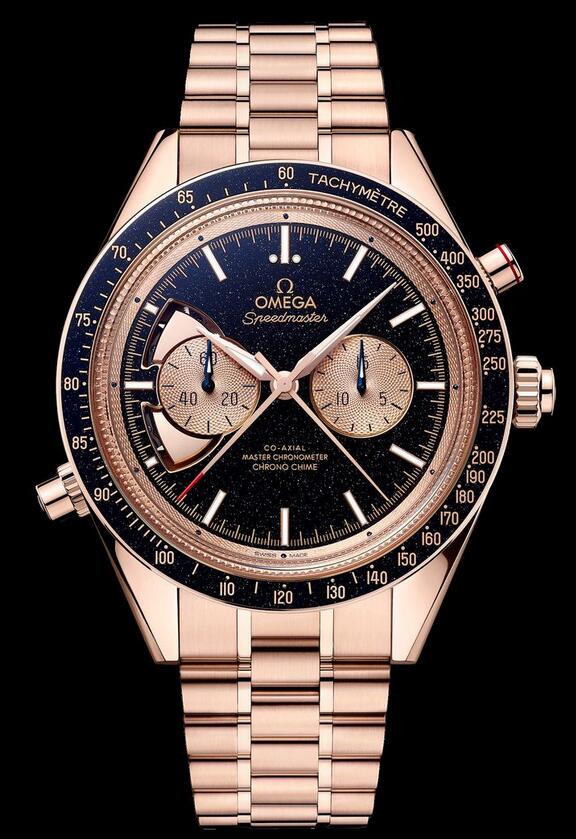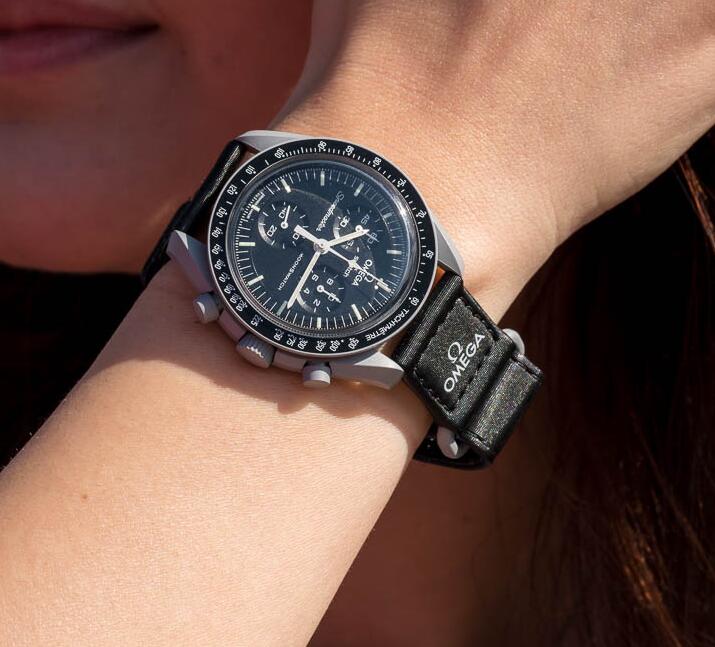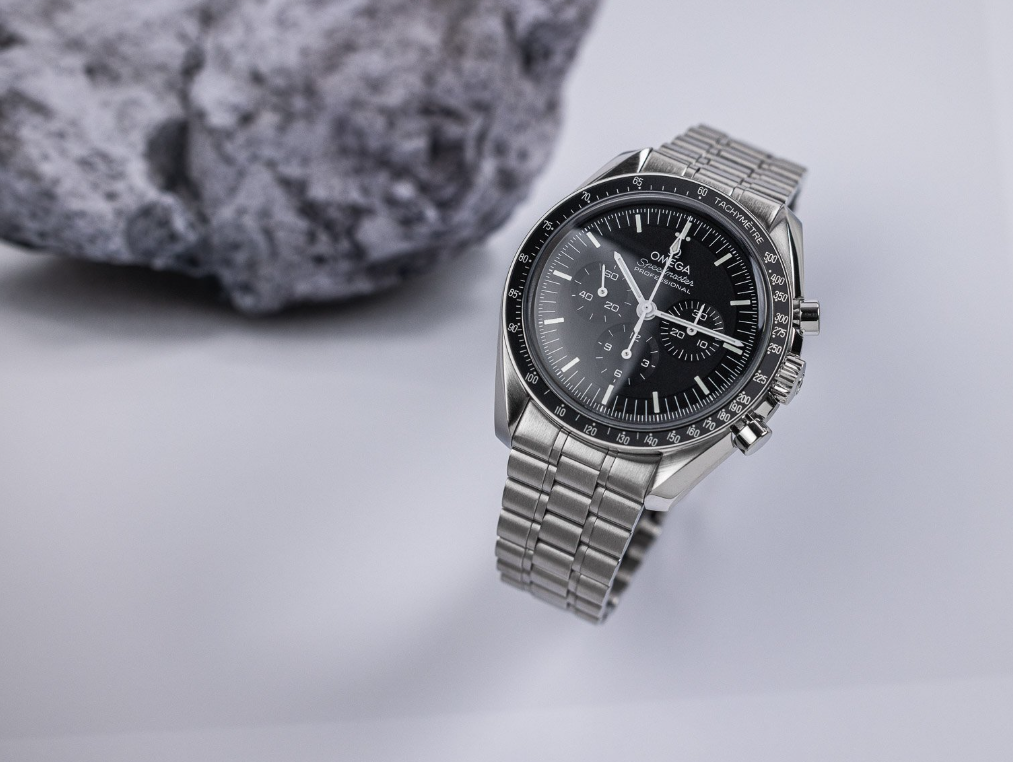Today, on the 47th anniversary of mankind’s arrival on the moon, I tend to get a little pensive. A Star Trek fan would instantly recognise the unsubtle nod to the show and perhaps ponder on the significance. Space and technology is but a tangential association, what I hope to achieve is draw your attention to how the watchmaking industry serves as a microcosm of human endeavour. From the first marine chronometers which allowed us to navigate the vast oceans to the exact replica Omega Speedmaster watches which allowed us to complete our mission to the moon, no other objet d’art has captured our imagination or driven mankind so forward as mechanical watchmaking.
From Earth to the Moon: Story of the Omega Speedmaster Moonwatch
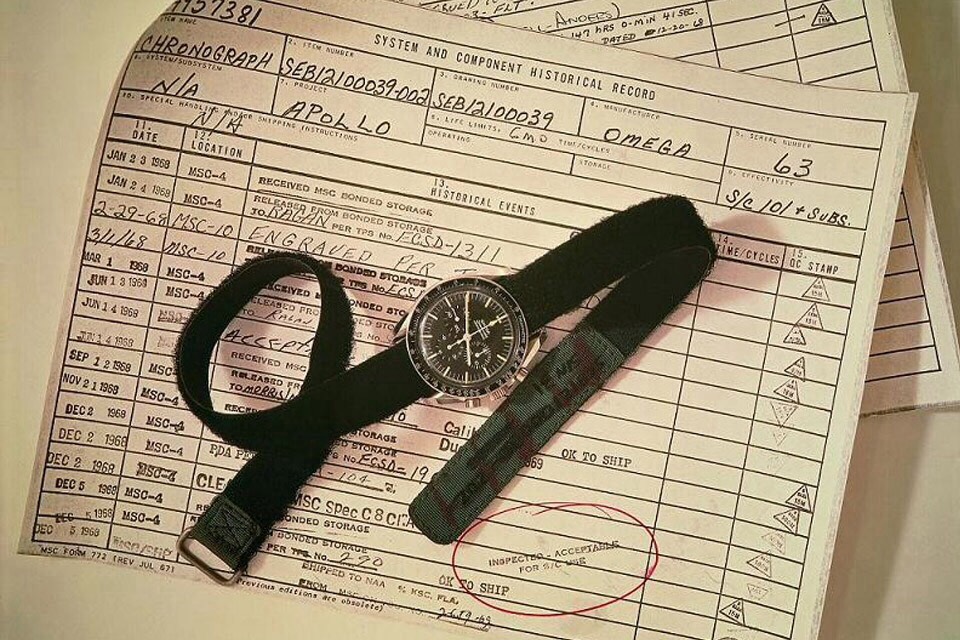
There’s so much we know about the Omega Moonwatch and also so much unyet unpublished. We know of Armstrong’s Speedmaster left in the Lunar Module during Apollo 11 mission due to failure of the onboard timer but how many know that the Speedmaster was also used by Commander Lovell to time engine ignition (and safely return the crew to Earth) during the Apollo 13 disaster?
During my visit to the Omega Manufacture, Petros Protopapas, Historian and Head of the Omega Museum was on hand to walk us through the voyages of one of human history’s most storied watches of all time, the Omega Speedmaster (henceforth nicknamed the Moonwatch).
1957: Omega Pre-Professional
In 2006, viewers were treated to a James Bond prequel, Casino Royale. It was here that we were introduced to Bond as a freshly minted ’00’ agent. Its also here that we learn of his backstory – former SAS (British Special Air Services) and his choice of watch- Omega Seamaster Planet Ocean. It might seem like a digression but it’s an important point to make as the aesthetic cues of Bond’s Planet Ocean can be traced back all the way to the first exact replica Omega Seamaster 300 online UK(dubbed sm300 by collectors) in 1957. Highly sought after today, the SM300 was based on mil-specs provided by British Ministry of Defence and truly, these watches were supplied to their elite forces, among them the SAS.
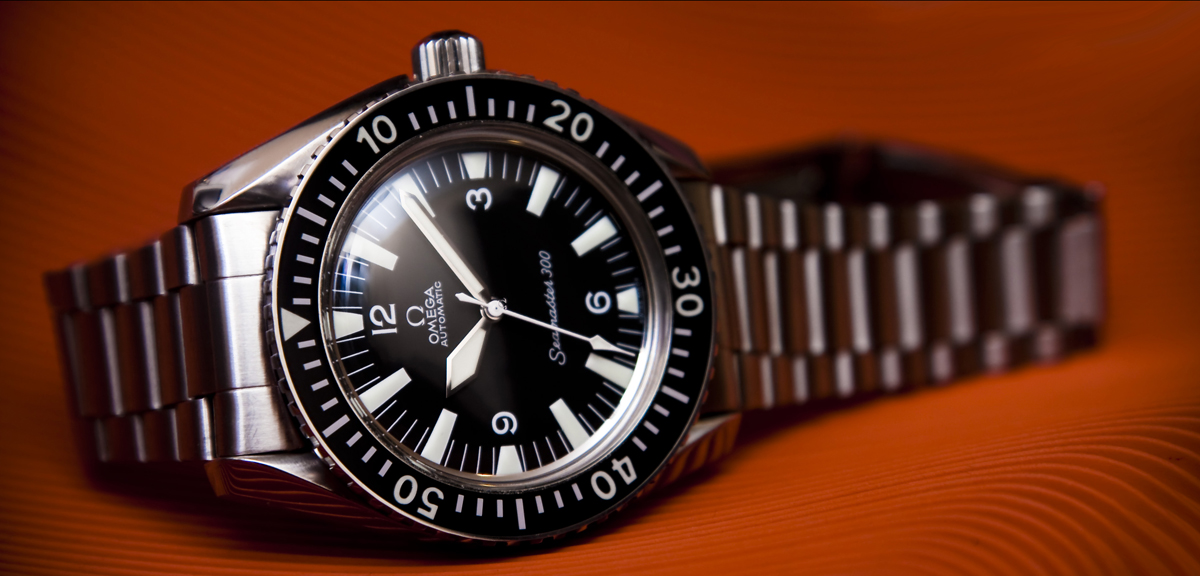
1957 can be considered a milestone year for Omega, as the brand was preparing to introduce “professional” watches which they defined as reliable timepieces for diving and daily use. After supplying over 100,000 watches to Allied Forces in World War II, Omega had collected a wealth of information on how to make robust water resistant and anti-magnetic watches; armed with that knowledge, they also introduced the Speedmaster.
But it’s one thing to have the knowledge of warp theory, one must also have access to materials to make a warp engine. In this case, it was Lemania who supplied Omega with the perfect chronograph movement; the 27CH12 which Omega then modified into the Cal. 321, the beating heart which powered Seamaster and Speedmaster chronographs of the day.
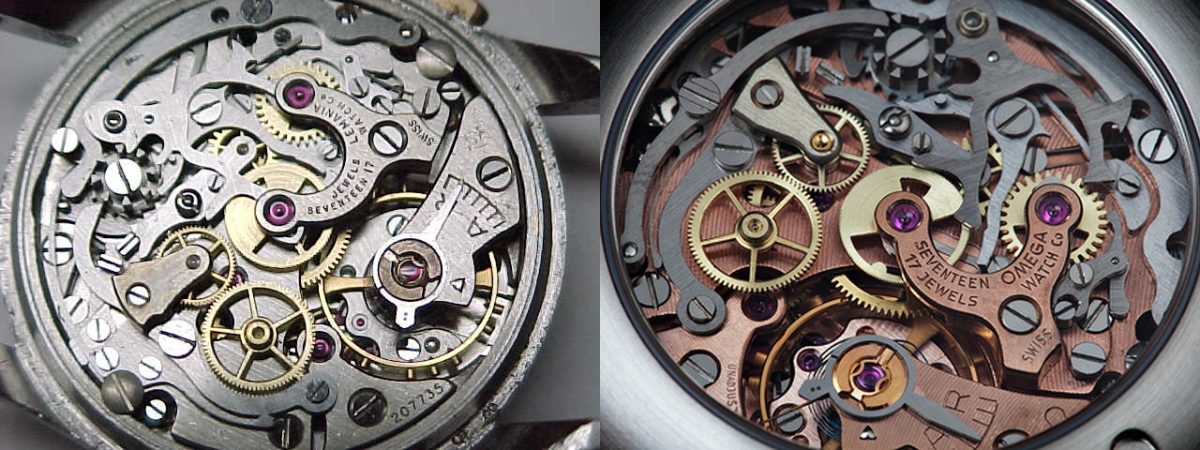
That said, pre-1950s chronographs had the tendency to wear a little thicker because you needed to make a dial a little bigger to accommodate the additional tachymeter, that meant that case thickness would proportionally increase as well. But Omega’s obsession with creating a ‘professional’ watch meant figuring out how to include the soft-iron anti-magnetic inner case without adding additional thickness. In essence, watch designers had to think outside the box. Which they literally did.
In a world’s first, Omega designed a tachymeter to be placed on the bezel rather than inside on the dial. Armed with the perfect calibre and now the perfect design, Manufacture Omega set about on showing the world what a true daily beater would be.
1962: The Right Stuff and requiring the Right Watch
Before Apollo, NASA began the fledgling space program with the “Mercury” missions. If you have ever served in a uniformed corps. (or at least watched a movie with uniformed personnel), you’d be aware of the two different sets of equipment: the first being ‘standard issue’, the other being whatever equipment veterans had deemed useful in executing the responsibilities and roles of the job; in this case, the original Mercury astronauts, being the pioneers of the space program, didn’t really have ‘standard issue’ so they approached Program Director Donald “Deke” Slayton.
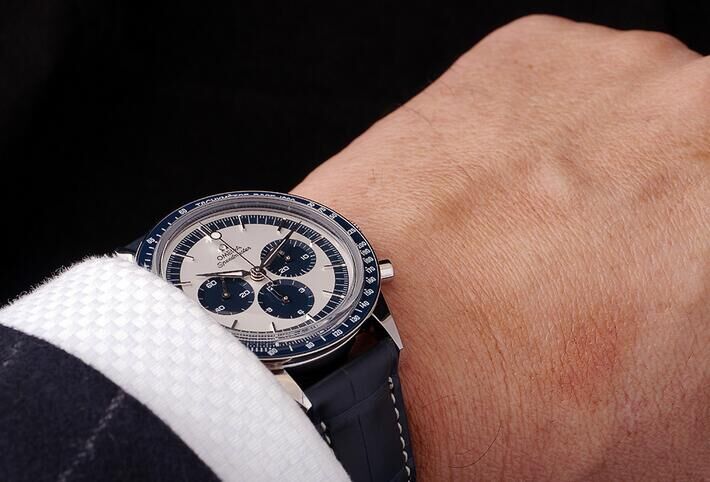
Unfortunately, the priority at the time was building rockets which could carry personnel into space without killing the crew, so Slayton declined and military men did what military men do when faced with red-tape and bureaucracy, they made do. Everyone bought their own watches and used whatever cameras that were available, there were simply no ISO standards at the time, an irony for such a scientific exercise.
Houston… We have a problem with non-standard watches
Commander Scott Carpenter wore a Breitling, Glenn had a Heuer and definitely quite a few Bulova watches (being an American firm) in the mix. They were all different models from different brands save a minor majority of three – (two which we know of) the watches of Wally Schirra and Gordon Cooper – Omega Speedmaster CK2998.
Keep in mind, mechanical watches obey simple laws of physics. In a digital computer, things not visually evident can cause micro-chips and circuitry to break down. Thus, Slayton realised that what he had deemed a small detail became operationally important: The watches used by all NASA astronauts had to be held to an objective, qualifiable standard of reliability in order to be assured of consistent and precise operation during space flight and all the rigours it entails.
To that end, NASA officials visited a jewellery store to acquire watches for testing. While it’s been repeated ad infinitum that it was a mystery shopper going incognito, the fact is that a government agency and the oversight it endures in spending taxpayer money means that all acquisitions had to be documented and authorised for official use. The jewellers in question knew they were selling to NASA.
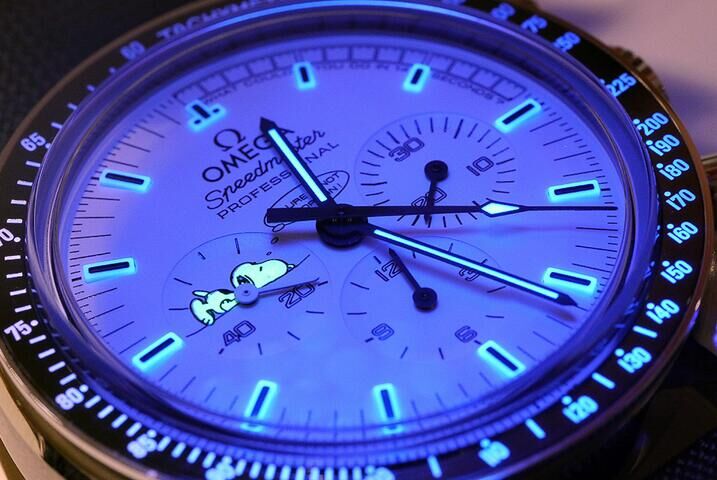
1964: Choosing the Moonwatch
James Ragan, an engineer, was hired in 1964 to devise and objectively test the watches for NASA and thus, he formalised the process with a Request For Proposal (RFP) for space going wristwatches. Ten firms were shortlisted in the process: Omega, Longines, Bulova, Rolex, Mido, Hamilton, American Elgin, Benrus, Gruen and Lucien Piccard.
Four of the firms responded with some others replying that such standards were not possible in a wristwatch. Hamilton misunderstood the brief and proposed a chronometer pocket watch; leaving Longines Wittnauer (the US agent for Swiss Longines) and Rolex to offer their versions of a Valjoux 72 chronograph and of course best replica Omega watches, with their pre-professional Speedmaster Ref 105.003.
Three Omega Speedmasters, Three Longines chronographs and Three Rolex chronographs
One for laboratory testing, one for live testing (issued to the astronauts) and the last for backup; James Ragan understood that laboratory conditions could in no real way simulate real life beyond the test parameters, so he devised a holistic plan where the watches were put through theoretical and practical situations and to see if there was consensus between the astronauts and the lab engineers testing the watches. I won’t go into details of the test which have been covered to death but I will say that Petropapas admitted that while the Omega Speedmaster was the winning chronograph, it too did not emerge unscathed. The dial had bubbled slightly during the extreme heat test but it wasn’t a disqualifying factor.
In the end, the report from Ragan to Slayton stated that there was unanimous preference for the Speedmaster as the astronauts considered it the easiest to operate with gloves on. With this sign off, NASA officially endorsed the Speedmaster as the only watch qualified for space flight and began placing orders.
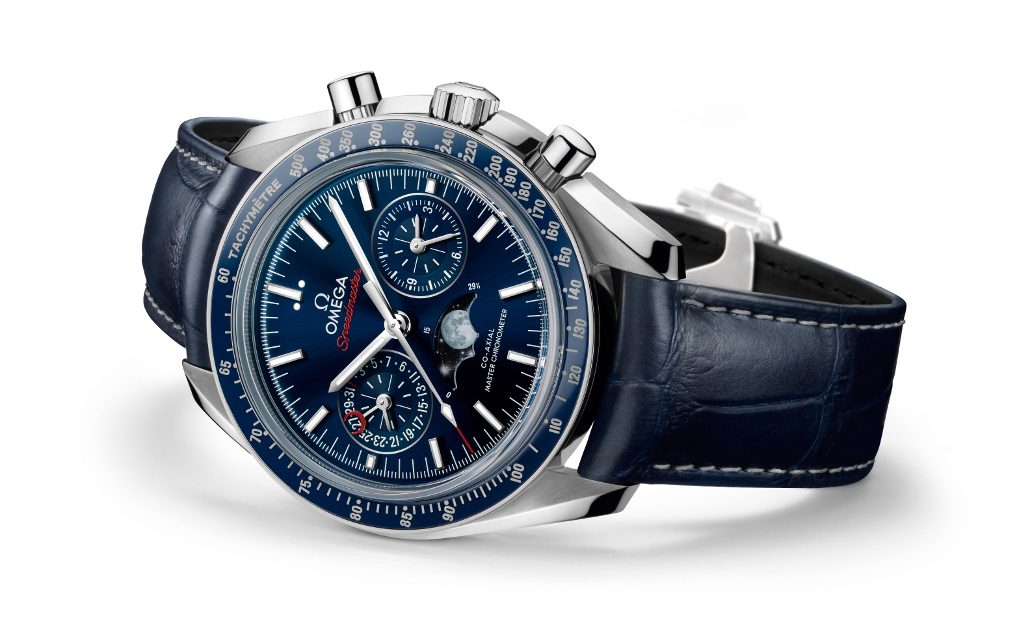
The Age of the Omega Speedmaster Moonwatch and the dawn of the Professional
The Apollo program was an 11 year project culminating with Apollo 17 in December 1972; and while the Omega Speedmaster was initially designed for more earth bound endeavours like auto-racing, it was submitted without modification or enhancement for NASA’s testing and use. Its success during Ragan’s rigorous trials paved the way for NASA to use them from the mid 60s right till Apollo’s last space flight. It’s this shared history with humanity’s push to the stars that has propelled the cheap replica Omega Speedmaster Moonwatch online to the top of celebrated timepieces (even if its dollar value doesn’t quite reflect that heritage).
The Speedmaster 105.003 was delivered till it was discontinued when Omega switched over to the “professional” model 105.012. According to Petropapas, it was the calibre 321 and not the calibre 861 which landed on the moon since a new movement would have triggered re-testing. As a point of reference, all watches used from Gemini to Apollo missions were cal. 321 powered Speedmasters.


